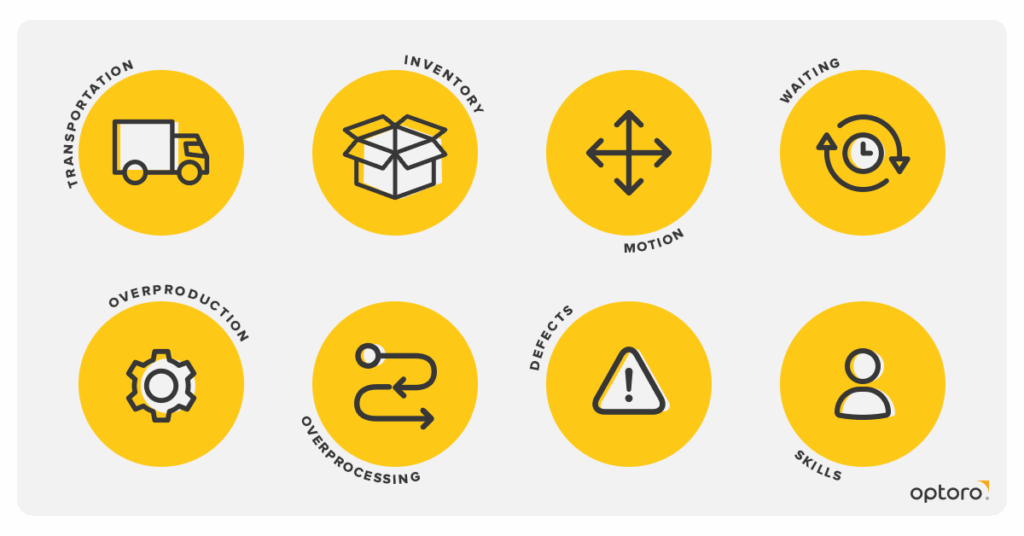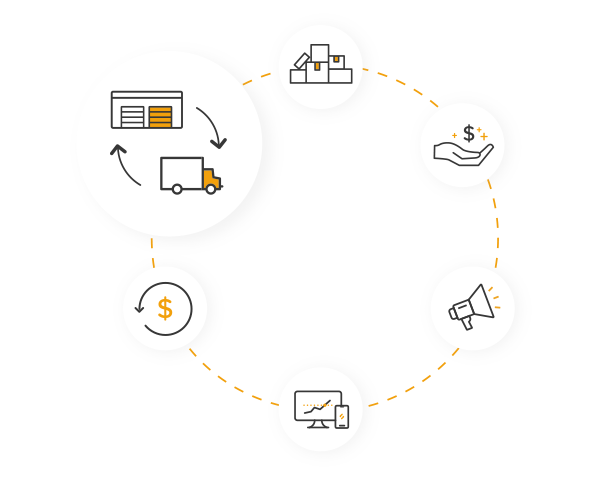In the world of supply chain, operational excellence hinges on improving efficiency and reducing waste. Yet, for many retailers and 3PLs, one area stands out as inherently challenging to optimize and a significant source of waste: returns.
Unmanaged returns can disrupt operations, create cumbersome processes, and generate backlogs, crushing margins and generating significant waste. However, with an effective system for returns management in place, organizations can directly address this problem.
Let’s take a closer look at two key areas where a Returns Management System (RMS) can play a role in reducing both operational and physical waste to enable sustainability and drive revenue.
Eliminating Operational Waste from Returns to Drive Sustainability
Utilizing the TIMWOODS Framework with Returns
To systematically identify and tackle waste in operations, businesses often turn to frameworks like TIMWOODS. Developed by Lean manufacturing experts at Toyota, TIMWOODS is a powerful tool applicable to any organization or industry, including retail and logistics. It’s an acronym for the seven (7) core types of waste:
Identifying these types of waste is essential for improving returns operations. And while many operators have these principles built into their processes for outbound fulfillment, it is often overlooked for returns. By focusing on TIMWOODS-thinking in reverse logistics, retailers, brands, and 3PLs can dramatically reduce their environmental impact while improving profitability.

How an RMS Empowers TIMWOODS for Reverse Logistics
Managing returns effectively requires strategic, purpose-built technology. An advanced Returns Management System (RMS), such as Optoro’s cloud-based solution, is designed to handle the entire returns lifecycle. By applying the TIMWOODS lens, we can see how an RMS directly addresses key waste areas in reverse logistics:
Transportation
An RMS orchestrates the most profitable reverse path for a returned item, directing items to the most efficient processing location to reduce unnecessary transit. This can include:
Inventory
Returns are valuable inventory. And even perhaps more important for brands importing goods that face looming, margin-crushing tariffs to replenish stock from overseas.
An RMS accelerates processing speed to restock, resulting in improved resale. This reduces the amount of returned inventory sitting idle, minimizing associated costs and potential devaluation. Additionally, by leveraging returns as a source of inventory, retailers and brands can reduce purchasing by up to 15%.
Motion
An RMS leverages configurable pre-built workflows to optimize and streamline processes, which reduce unnecessary manual steps and movement. We know that every move or touch in logistics adds to the cost. An automated system, like an RMS, minimizes unnecessary movement by directly dispositioning returns upon receipt and reducing these touches and movements, which ultimately retains the item’s value.
Waiting
Delays in processing returns create waiting time, and often, the longer returned inventory sits without being processed, the more resale value it loses — often leading to inventory ending up in a landfill. An RMS can reduce the returns processing timeline by 93%, reducing “waiting” waste by banishing backlogs and making returned items available to sell quickly, while they can still be purchased at full price.
Overproduction
In order to support demand levels, retailers and brand manufacturers often overproduce or overpurchase to avoid stockouts. However, with an RMS, you get resalable inventory back in market faster, reducing the need for the extra inventory padding.
Overprocessing
This waste involves doing more work than needed on a return. An RMS automates disposition decisions, which avoids unnecessary touches, inspections, paperwork, and redundant steps. Optoro’s proprietary SmartDisposition® engine, for example, makes instant decisions about what to do with your returned inventory, based on factors such as:
While it may seem intuitive to test and grade every return, the sooner you can make an automated decision about a return with the information you already know, you can reduce the unnecessary over-processing of a return.
Defects
Collecting data about why a shopper is returning an item is a key piece of information for returns. For example, if a shopper indicates that an item is damaged or defective when they’re making their return, an RMS that uses data intelligence can automatically direct that item to appropriate channels like repair or refurbishment rather than being improperly handled or immediately scrapped, maximizing value and reducing waste. It also provides better reporting around defects so that you can adjust merchandising strategies if needed.
Skills
Returns often require a warehouse’s most skilled (and usually highest-paid) operators, and tend to be one of the most labor-intensive operations in a warehouse due to their nuances. With an RMS in place, even the newest employees can be up and running on the software in the span of just a few hours. Plus, by using data intelligence and systems to process returns, warehouse productivity can more than double — which means, in addition to simply processing returns faster, you can utilize your employees to their fullest potential.
Reducing Physical Waste from Returns via Recommerce
The future of retail is increasingly defined by circularity, driven by business strategies that emphasize reuse, repair, refurbishing, and recycling to move towards zero-waste production. A significant part of this shift in retail is the growing focus on recommerce and resale — in this case, giving returned and excess items a “second life.”
This practice has been around for a while (in fact, Optoro was founded on it!) and is gaining momentum with younger consumers who value eco-friendly practices, and is also influenced by consumers looking to save money due to new regulatory frameworks. The secondhand market, for instance, is projected to double by 2026 and grow significantly faster than traditional retail clothing sales. In a recent survey, 77% of shoppers stated that they are extremely likely or likely to purchase recommerced goods.
Beyond the positive environmental impact, recommerce programs provide significant business advantages for retailers by increasing customer engagement, enabling new revenue streams, and enhancing brand loyalty. However, effectively implementing recommerce and resale strategies relies heavily on efficient returns management and reverse logistics.
Unwanted products need to be recovered efficiently and responsibly redirected without creating a ton of waste and loss. This is where a Returns Management System (RMS) becomes crucial. An RMS streamlines the handling of returned items by using automation, data-driven decision-making, and configurable workflows to identify resellable inventory and instantly direct it to the most profitable resale channel, including:
This strategic approach transforms returns from a cost and waste center into an opportunity for driving productivity, profitability, and sustainability.
By controlling their own resale channels, retailers have been able to grow profits and reduce their reliance on traditional production channels.
Some examples we love:
Conclusion
For retailers, brands, and 3PLs navigating today’s market, integrating sustainability into operations is both essential and profitable. The significant volume and cost of returns present a major opportunity to reduce waste and improve efficiency within the reverse supply chain. By adopting the Lean TIMWOODS framework to identify inefficiencies and leveraging an advanced Returns Management System like Optoro’s, businesses can systematically combat waste across every touchpoint of the returns process. This strategic approach drives efficiency, reduces costs, maximizes recovery, and ultimately supports the transition towards a more sustainable, circular retail model.
Transforming returns from a costly burden into a driver of profit and purpose is achievable with the right strategy and technology.
Want to learn more about RMS?

Kelly Sharon
Director, Brand and CommunicationsKelly has spent the last 14 years partnering with marketing, sales, product, and design teams of all shapes and sizes to bring brand content and stories to life. In her last 7 years with Optoro, she has served in roles from brand design and creative direction to product marketing and communications. When she isn’t brainstorming fun ways to talk about returns and supply chain, she can be found at the pottery wheel or doing “competitive research” on returns (aka shopping). She lives in Richmond, Virginia.
